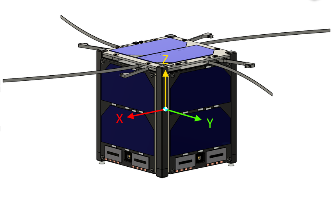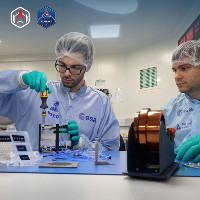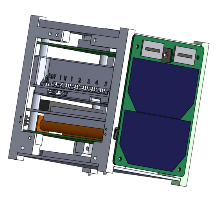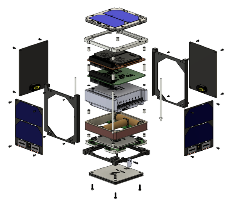| Satellite | 6S (Spinning Sun-Synchronous Satellite for Station-keeping Structural battery and Solar cell testing) |
|---|---|
| Form factor | CubeSat |
| Units or mass | 1U |
| Status | not launched, expected in 2025 |
| Launcher | not launched |
| Organization | Politecnico di Milano |
| Institution | University |
| Entity | Academic / Education |
| Nation | Italy |
| Partners | Politecnico di Milano, Volta Structural Energy, Esatan, Ansys, Leafspace, Sidereus, D-Orbit |
| Oneliner |
Frst satellite entirely designed and built by students of Politecnico di Milano. |
| Description |
Our goal is to provide an opportunity to get hands-on experience and apply knowledge about mission and subsystems design in practice. We are also creating network with external parties, as the team meets with interested companies, securing not only components or sponsorships, but also future jobs. The 6S mission aims at testing a set of two innovative payloads mounted on a 1U CubeSat: a set of Perovskite solar cells and a structural battery. The classic LEOP phase is followed by the Nominal Testing Phase in which basic payloads functioning is assessed and performance data downlinked. The Off-nominal Testing Phase follows, in which all the payloads and the overall platform are stressed even more. Lastly, the satellite is passivated, and natural decay is exploited. The primary objective is to conclude the Nominal Testing Phase tests successfully: monitoring the structural battery employing thermocouples, pressure sensors and strain gauges and measuring solar cell power produced and correlating it with attitude measurements. PESCA These properties make them attractive for space applications. Eight cells samples of different Perovskites will be supplied by the University of Cambridge and Potsdam research group and will be flown for the first time in space, on a long therm mission. PESCA (PErovskite Solar Cells Analyzer), is an in-house testing circuit for the solar cells that was designed and created by the team with the advice of some PoliMi’s professor. The main goal is to measure degradation over time and to characterize the cells in space, by measuring the open circuit voltage (Voc), short circuit current (Isc) and taking some hundreds of points of the IV curve, while aquiring temperature and sunlight inclination. Volta Structural This leads to volume reduction, which is at a premium in space applications. As they are just emerging from the prototype phase, many variables require testing to ensure the readiness of this technology for space missions. The battery id provided by Volta Structural Energy, an Innovative Start-Up created by former PoliMi students, and will be analyzed in its thermal and structural behaviour in space. All test data will be centrally collected on a daughterboard attached to the on-board computer. These PCBs were designed to fit the needs of the mission, saving space compared to out of the box solutions and optimises the utilisation of all available inputs and outputs of the OBC. Politecnico di Milano, Payload providers (Cambridge University&Potsdam Research Group, Volta Structural Energy), Software companies (Altair, Esatan, Ansys), D-orbit, Leafspace, Sidereus. |
| Notes |
Selected for ESA's "Fly Your Satellite! Design Booster" programme in early 2023. |
| Sources | [1] [2] [3] [4] [5] [6] [7] [8] [9] [10] [11] [12] [13] [14] [15] |
| Photo sources | [1] [2] [3] |
Last modified: 2024-12-29




